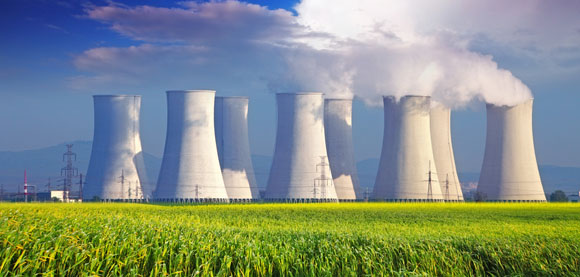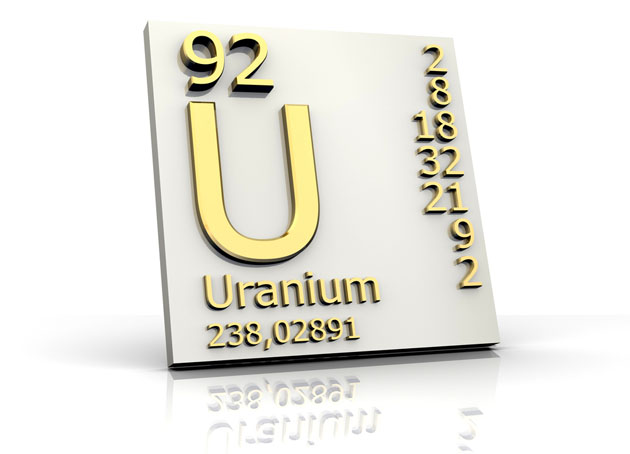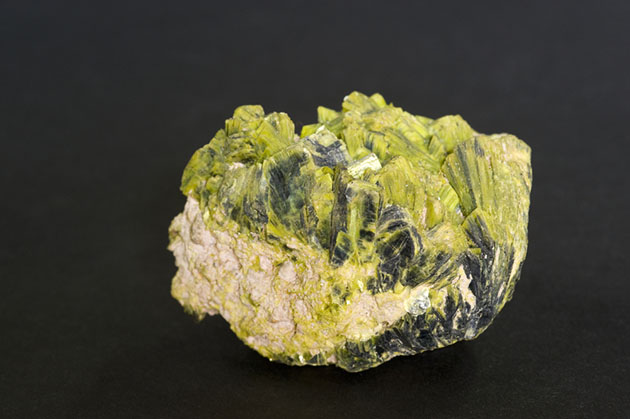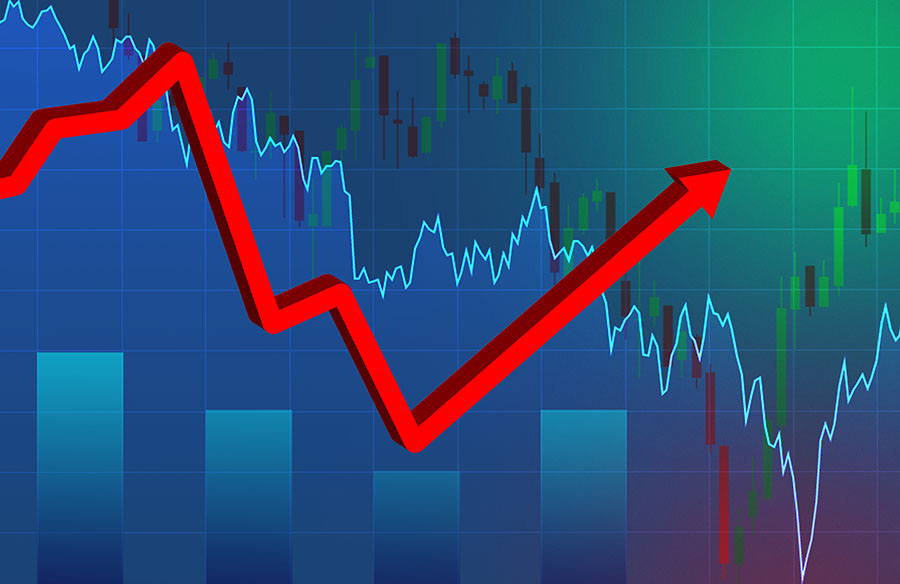The Mining Report: The 27th annual ROTH conference was held in California last month. What's the purpose of this conference?
Joe Reagor: We provide management access to our client base and provide exposure for the smaller-cap companies that are somewhat under-covered by the Street.
TMR: How would you sum up the sentiments of the participants?
JR: In the mining sector, I heard a bit of cautious optimism. Conditions seem to be improving, but the strength of the U.S. dollar is not helping most commodity prices. However, if you operate outside of the U.S., margins are improving.
TMR: With all the concern about a possible stock-market bubble, was there perhaps a feeling that miners may be due for a revaluation because they produce things of tangible worth?
JR: There has been more generalist interest in mining recently because of the fear that the broader market is getting a bit frothy in certain sectors. This lends support for diversification and investment in mining companies because, as you said, they do produce hard assets and can benefit should the overall market underperform.
TMR: Since we last spoke, the spot price of uranium topped $40/pound ($40/lb), and is now just above $39/lb. What are the fundamentals that have undergirded this rise?
JR: There was a significant supply overhang after the Fukushima disaster of 2011. Then there were two large sales that occurred after that, probably inventory liquidation, perhaps from Japan. We reached the bottom last summer.
The supply overhang peaked again due to increased production from Kazakhstan. But that is no longer a problem. Kazakh production is no longer growing, and some of the larger uranium projects globally have been put on hold. That has allowed the inventory level to return to normal levels and has enabled a more sustainable pricing point.
TMR: Where do you see uranium going for the duration of 2015?
JR: There will be additional demand as nuclear reactors come back on-line in Japan, and as China completes new ones. So, I think the price will continue to trend upward, perhaps to $50/lb by year-end, although we might continue to see small pullbacks.
TMR: China's demand for new reactors is dependent on burgeoning economic growth. Will China continue to expand as it has in the recent past?
JR: I'm not a macro expert on that subject, but my opinion is that China will continue to grow at a rate that will inspire envy in Europe and the U.S., but it will not be the double-digit growth we became accustomed to. China needs to produce more power for a growing and more affluent population, so it will need reactors. For that reason, I think China's uranium needs may grow faster than its economy overall.
TMR: According to a report by Cameco Corp. (CCO:TSX; CCJ:NYSE), the amount of uranium required to service the growing number of nuclear reactors will increase from 155 million pounds (155 Mlb) annually today to 230 Mlb annually within a decade. Can this need be met?
JR: There is some apprehension about whether uranium production can grow to that level. One source will be uranium as a mining byproduct. In the past, uranium produced by certain mines was treated as waste, but, if needed, this could enter the market.
Multimillion-pound uranium projects in Canada and in the U.S. would likely see increased investment should uranium rise above $55/lb. And Kazakhstan can increase production significantly, even though it already produces one-third of world supply.
TMR: Assuming that uranium demand does indeed rise to 230 Mlb annually, how would that affect the price?
JR: In the short term, price spikes of up to $100/lb are possible. In the long term, we're looking at a price in the $60–70/lb range. The problem of price spikes could be solved with offtake agreements, whereby utilities help fund the development of uranium projects in return for contracts to buy uranium at fixed prices.
TMR: Given the recent success of uranium exploration in Saskatchewan, will there be a rush to develop these projects should the uranium price top $55/lb?
JR: Not necessarily. The uranium industry is now well aware of its supply-and-demand dynamics. A price above $55/lb will encourage additional development, but not of any projects that would result in significant oversupply. Most of the world's active uranium mines are very profitable at $55/lb.
TMR: How finely can uranium demand be calibrated?
JR: Current uranium demand is 155 Mlb, plus or minus 5%, assuming no additional reactors. Reactor lead time is up to five years, and that is more than enough time to source new supply.
TMR: Can you explain how the price of uranium is determined by long-term contracts signed by utilities and what the current state of this process is?
JR: Contract-price uranium has enjoyed a premium over spot price. This has trended down to only a couple of dollars a pound, but historically it has been closer to $10/lb. Utilities generally seek to sign contracts to buy uranium two years into the future. But they will sometimes take delivery 6 to 12 months early and have it sent to their concentrators. The ultimate purpose of these contracts for utilities is to provide price stability for energy consumers. And to the miners, these contracts guarantee financing.
The great majority of uranium is sourced via contracts, with only 5–15% provided by the spot market.
TMR: It has been suggested that the price of uranium is likely to increase soon because several large 7 to 10 year contracts are coming to an end. Do you agree?
JR: Some larger producers, such as Cameco or AREVA SA (AREVA:EPA), have contracts with utilities coming up for renewal. There is a essentially a quoted contract price out there that's well known and then an assumed inflationary rate beyond that. I think the utilities are likely to simply renew these contacts with their existing producers. The bigger concern is that the Japanese utilities have not renewed contracts and don't have offtake agreements, so they might be forced into the spot market.
TMR: We often hear the uranium market compared to a game of chicken between suppliers and utilities. Is this a useful metaphor?
JR: It's a bit overstated. Suppliers use this comparison in order to suggest that the price of uranium is going to increase, but when we compare in importance the overall cost of running a nuclear power plant versus the cost of 500,000 lb (500 Klb) to 1 Mlb of uranium, the latter is not all that crucial.
Utilities are not that incentivized to haggle over a few dollars a pound, as the suppliers would have you believe. Utilities can now make up any supply shortfalls from their contracts in the open market, and that could lead to a tighter spot market.
TMR: Would you talk about mergers in the industry?
JR: It's been three months since the merger of Energy Fuels Inc. (EFR:TSX; UUUU:NYSE.MKT; EFRFF:OTCQX) and Uranerz Energy Corp. (URZ:TSX; URZ:NYSE.MKT) was announced. The deal is transformational in that it creates multiple avenues of producing returns for shareholders. Energy Fuels had been a conventional uranium miner and producer. Adding Uranerz will give it an in-situ recovery (ISR) method of production and therefore the flexibility to fluctuate between the two methods as needed. ISR also provides a low-cost option should the uranium price flatten or trend downward. And the merger also provides the new company with additional cash flow to reinvest into larger uranium conventional projects should the uranium price reach the $55–60/lb range.
TMR: You recently noted that revised growth plans for the new company will not be available until the merger is complete. Are there any clues as to what those plans might be?
JR: U.S. companies are prohibited from providing such guidance. I'm sure Energy Fuels would prefer to provide it to shareholders and analysts, but it can't.
TMR: In your March 23 research report, you wrote, "Q4/14 was a poor quarter for [Energy Fuels], as the company made no significant uranium sales. . .we anticipate a similar sales schedule in 2015 to that of 2014, with [the company] producing only 70 Klb of uranium and drawing down inventories to meet contract sales volumes of 800 Klb." Is this model sustainable?
JR: Well, Energy Fuels has contracts beyond this year. I believe the contracts do get a little smaller as we go out, but Energy Fuel's goal is to produce only from its conventional mining methods what it needs to deliver into those contracts. Should the uranium spot price rise above $50/lb, Energy Fuels would be able to increase production.
On the other hand, should the spot price remain flat, we'd expect the company to produce just enough to meet contracts, with perhaps a slight amount beyond that to provide a cushion. The 75 Klb is just it finishing up the Pinenut mine in Arizona. Next year, Energy Fuels will switch to its Canyon mine in Arizona, which is expected to produce the 700 Klb it will need for next year's deliveries.
TMR: How does Canyon compare to Pinenut with regard to costs? And are there significant costs associated with switching production from Pinenut to Canyon?
JR: We won't know the cost metrics until Canyon actually begins production, but I expect them to be similar. There's going to be a development cost for Canyon, probably $10–20 million ($10–20M), but the good news is that the Pinenut workforce is being transferred to Canyon, so there will be no significant severance costs.
TMR: Around the middle of February, Energy Fuels' shares were trading around $6.50 but then fell to $5.03 by the beginning of April. They've since recovered to $5.26/share. Did the share-price fall surprise you?
JR: I've been a bit surprised in general by the underperformance of the small-cap uranium producers in the face of the steady flow of positive news regarding the uranium price. This provides an opportunity to investors, in my opinion.
We're maintaining a Buy rating and an $11 target price for Energy Fuels until we get further guidance. My overall view is that the Uranerz acquisition will result in a stronger, better company. Its current valuation is based solely on Energy Fuels, so there is upside for the combined company, even though reworking the numbers may or may not result in a higher valuation after the fact.
TMR: How does Uranerz make the new company better?
JR: By providing a lower-cost production footprint. Nichols Ranch will be an ISR producer and is expected to have significantly lower operating costs than those of conventional mines such as Canyon. Uranerz is also bringing some contracts that Energy Fuels can deliver into. Plus, Uranerz's additional ISR projects give Energy Fuels additional future production flexibility.
TMR: How important is flexibility in today's uranium market?
JR: Given the potential for price shocks, up or down, having flexibility in its production schedule and investment decisions is a significant differentiator for Energy Fuels. It stands apart from the other uranium juniors that have solely conventional or ISR production.
TMR: So ISR capability allows the new company to move more quickly based on possible spikes?
JR: ISR can reach production faster but cannot reach the same magnitude. ISR also allows fluctuation of production flow rates without significantly altering production costs. With conventional mines, production fluctuations can significantly alter operating-cost metrics.
The advantage of conventional mines is that they are more scalable. So one would expect a shift to conventional mining should we see a big increase in the uranium price.
TMR: How about other uranium companies?
JR: Ur-Energy Inc. (URG:NYSE.MKT; URE:TSX) has decided to produce enough to service its contracts, just as Energy Fuels has. Ur-Energy is contracted to produce 650 Klb in 2015, and it will produce about 800 Klb based on guidance. A good deal of the surplus will go into the spot market, but the company does have the potential to exceed that production—up to 1 Mlb—if spot prices recover further.
The company has decided against building an inventory or being forced to sell too much of its potential production into a low spot-price environment.
TMR: Ur-Energy shares spiked in late winter from just below $1 to above $1.30/share. Why did this happen?
JR: I think the share price was probably tracking the uranium price improvement and some good news from Japan. There may have also been some short covering on the stock. Because Ur-Energy is not in the midst of a merger, there's no arbitration going on, and therefore the stock can trade based on the fundamentals of the macro environment.
TMR: How much production capacity does Ur-Energy have?
JR: The company has a second deposit in Wyoming called Shirley Basin. It's a couple of years away from reaching production, but it could be another million-pound producer. We recently increased our target price for this company from $1.75 to $1.90.
TMR: What other junior you follow has seen a significant drop in its share price?
JR: Uranium Resources Inc. (URRE:NASDAQ) fell from above $1.80 in March to $1.27.
TMR: Why did that happen?
JR: First, the company raised additional capital necessary to continue to fund development of its assets, and the additional dilution forced the valuation down. That offset the uptick in the uranium spot price.
Second, Uranium Resources provided an update on its pounds in the ground resources and reserves, which showed some larger than expected reductions at certain properties. When the company made a land swap agreement on Roca Honda, it didn't provide the exact details of how many pounds were leaving the resource. This turned out to be more than we previously thought.
This company is more of a long-term call option on uranium. It has no production today, and a uranium price of $48/lb would be necessary for it to move forward on its assets. On March 23, we reduced our target price from $3.50 to $2.25. This company's assets are vast, so investors who believe that the uranium price will spike will be interested in it.
TMR: What's the best strategy for investors seeking to benefit from the expected growth of nuclear power?
JR: There are two strategies I like. The first is targeting companies that are not getting full credit for assets that are expected to go into production in the next few years, like Ur-Energy's Shirley Basin asset. The second is targeting companies, like Energy Fuels, whose portfolios are diversified enough such that they can wait out flat uranium prices.
TMR: So you see uranium miners as a long-term investment?
JR: Yes. The lead time of new uranium mines is long. So the ability to change the stories of these companies does not usually happen overnight, unless there is an acquisition, such as Energy Fuels buying Uranerz.
As I said earlier, we expect higher uranium prices, but we haven't seen these companies move because most lack financial flexibility. Should the price of uranium reach the $60–70/lb range, these companies will show the cash flow level needed to justify higher valuation, in our opinion.
TMR: Joe, thank you for your time and your insights.
 Joe Reagor is a research analyst with ROTH Capital Partners, providing equity research coverage of the natural resources sector. Prior to ROTH, he worked in equity research at Global Hunter Securities and at Very Independent Research, covering a wide array of resources companies including metals (steel and aluminum), mining (gold, silver and base metals) and forest products (containerboard, OCC, UFS and pulp). Reagor earned a Bachelor of Arts in economics and mathematics from Monmouth University.
Joe Reagor is a research analyst with ROTH Capital Partners, providing equity research coverage of the natural resources sector. Prior to ROTH, he worked in equity research at Global Hunter Securities and at Very Independent Research, covering a wide array of resources companies including metals (steel and aluminum), mining (gold, silver and base metals) and forest products (containerboard, OCC, UFS and pulp). Reagor earned a Bachelor of Arts in economics and mathematics from Monmouth University.
Want to read more Mining Report interviews like this? Sign up for our free e-newsletter, and you'll learn when new articles have been published. To see a list of recent interviews with industry analysts and commentators, visit our Mining Report homepage.
DISCLOSURE:
1) Kevin Michael Grace conducted this interview for Streetwise Reports LLC, publisher of The Gold Report, The Energy Report, The Life Sciences Report and The Mining Report, and provides services to Streetwise Reports as an independent contractor. He or his family own shares of the following companies mentioned in this interview: None.
2) The following companies mentioned in the interview are sponsors of Streetwise Reports: Energy Fuels Inc. and Uranerz Energy Corp. The companies mentioned in this interview were not involved in any aspect of the interview preparation or post-interview editing so the expert could speak independently about the sector. Streetwise Reports does not accept stock in exchange for its services.
3) Joe Reagor: I own, or my family owns, shares of the following companies mentioned in this interview: None. I personally am, or my family is, paid by the following companies mentioned in this interview: None. My company has a financial relationship with the following companies mentioned in this interview: None. I was not paid by Streetwise Reports for participating in this interview. Comments and opinions expressed are my own comments and opinions. I determined and had final say over which companies would be included in the interview based on my research, understanding of the sector and interview theme. I had the opportunity to review the interview for accuracy as of the date of the interview and am responsible for the content of the interview.
4) Interviews are edited for clarity. Streetwise Reports does not make editorial comments or change experts' statements without their consent.
5) The interview does not constitute investment advice. Each reader is encouraged to consult with his or her individual financial professional and any action a reader takes as a result of information presented here is his or her own responsibility. By opening this page, each reader accepts and agrees to Streetwise Reports' terms of use and full legal disclaimer.
6) From time to time, Streetwise Reports LLC and its directors, officers, employees or members of their families, as well as persons interviewed for articles and interviews on the site, may have a long or short position in securities mentioned. Directors, officers, employees or members of their families are prohibited from making purchases and/or sales of those securities in the open market or otherwise during the up-to-four-week interval from the time of the interview until after it publishes.



























































